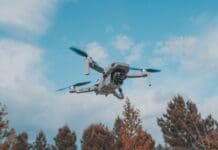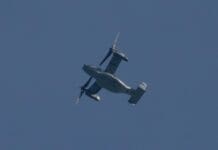This post is also available in:
 עברית (Hebrew)
עברית (Hebrew)
The US National Oceanic and Atmospheric Administration NOAA wants to increase the use of unmanned airborne and maritime systems in all mission areas.
According to their new Unmanned Systems Operations Program, the agency will promote the safe, efficient and economical operation of the collection of high-quality environmental data for the agency’s science, products and services.
NOAA currently uses unmanned systems for seafloor and habitat mapping, ocean exploration, marine mammal and fishery stock assessments, emergency response, and at-sea observations that improve forecasting of extreme events, such as harmful algal blooms and hypoxia. While Unmanned systems are already in use by the agency for decades, the recent increase in the availability of highly capable systems has brought a corresponding increase in their innovative use as a force multiplier for many programs. NOAA’s use of small unmanned aircraft for science missions has increased more than tenfold since 2012.
The technologies will be integrated in the operational platforms that will gather critical environmental data.
NOAA is partnering with the Navy this year to evaluate new unmanned technologies for ocean science applications through the Advanced Naval Technology Exercise (ANTX) program.
According to uasweekly.com, the agency received $12.7 million from Congress in Fiscal Year 2020 to improve and expand unmanned operations across the agency, including the creation of the new program.

























